
15 09 20 28 A Financial Wellness Benefit That Goes Beyond Education To Real Action - Charles Krawitz, Alliant Credit Union Why Disaster Insurance Should Be In Your Employee Benefits Program - Steve Gaer, Recoop Disaster Insurance Companies Betting Big On Flexibility At Work - Marcus Mossberger, Infor How Workplace Benefits Can Empower Black Employees Every Day - Aaron Harding, Morgan Stanley at Work JANUARY 2023 • Vol.10 • No.01 (ISSN 2564-1980) Themed Edition on Hottest Trends in Benefits 4 EmPlOYEE BEnEFITS TREnDS TO WATCH In 2023 - Sheri Atwood, Founder and CEO, SupportPay
12 What You Can Learn About Benefit Packages From Series A Startups
Strong benefits can benefit both employees and employers
– Ken Babcock, CEO and Co-Founder, Tango
18 The Housing Crisis Is Also A Workplace Crisis
What can employers do to address this challenge?
– Matt Bahl, VP, Workplace Market Lead, Financial Health Network
24 Great Expectations: Workplace Health And Wellness Trends In 2023
Femtech is the future
– Sammy Chown, Public Health Researcher, Carebook Technologies Inc.
4 Employee Benefits Trends To Watch In 2023


Offering a comprehensive benefits package will be critical for organizations looking to retain and attract top talent in 2023
– Sheri Atwood, Founder and CEO, SupportPay
30 Feeling The January Blues? Here’s How Employers Should Help
Ensure January is productive and enjoyable
– Aisling Teillard, Chief Customer Officer, beqom
32 Quiet Quitting: Here’s What You Should Know
Personal finance expert highlights risks of doing the 'bare minimum' at work
– Brean Horne, Personal Finance Expert, NerdWallet
Articles
07
I n DEX Employee Benefits & Wellness Excellence JANUARY 2023 Vol.10 No.01
On the Cover
(ISSN 2564-1980)
Themed Edition on Hottest Trends in Benefits
A Financial Wellness Benefit That Goes Beyond Education To Real Action

Increase productivity by reducing financial stress and distraction
- Charles Krawitz, Chief Capital Markets Officer, Alliant Credit Union
Why Disaster Insurance Should Be In Your Employee Benefits Program

Don’t let employees get swept up in financial ruin
- Steve Gaer, President, Recoop Disaster Insurance
20
Betting Big On Flexibility At Work
It is time to focus on time as the benefit of choice at work
- Marcus Mossberger, Future of Work Strategist, Infor
28
How Workplace
Benefits Can Empower Black Employees Every Day


Helping people of color build a stronger future
- Aaron Harding, CRO, Morgan Stanley at Work
Top Picks 09 15
INDEX
Benefits & Wellness Excellence - Monthly Interactive Learning Journal
This monthly interactive learning experience captures key metrics and actionable items and keeps you focused on your Benefits and Wellness planning goals and solutions.
Benefits and Wellness Virtual Events
Employee Benefits and Wellness Virtual Events ensure attendees stay compliant and up-to-date with the latest changes to employee benefits and wellness regulations. Each event varies on topics such as healthcare legislation and compliance related to employee benefits and workplace wellness programs including COBRA, FMLA, Medical Benefits, the Affordable Care Act (ACA), Outsourcing Benefits, Retirement Benefits, Voluntary Benefits and Work-Life Programs. Wellness topics encompass injury prevention, battling obesity, disease prevention, how technology is affecting wellness. Each Virtual Event consists of up to 10 credit webcasts.
Benefits and Wellness Webcasts for Credit

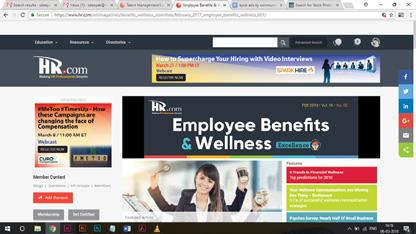
HR.com webcasts deliver the latest Benefits and Wellness industry news, research trends, best practices and case studies directly to your desktop. Webcasts are available live online with a downloadable podcast and a copy of the slides (PDF) available before and after each webcast. Earn all of the required recertification credits for aPHR, PHR, SPHR, GPHR, and SHRM Certifications. HR.com’s onehour webcasts, in every HR specialty including Benefits and Wellness, are pre-approved for HRCI and SHRM credit (excluding Demo webcasts).
Benefits and Wellness Community
Join more than 100,000 HR.com members with a similar interest and focus on Benefits or Wellness. Share content and download research reports, blogs, and articles, network, and “follow” peers and have them “follow” you in a social network platform to communicate regularly and stay on top of the latest updates. This well established Benefits and Wellness Communities are an invaluable resource for any HR professional or manager.
How are our Employee Benefits & Wellness Products and Services helping to make you smarter?
For more information phone: 1.877.472.6648 | email: sales@hr.com | www.hr.com
Use these invaluable Employee Benefits & Wellness resources today!
Editorial Purpose
Our mission is to promote personal and professional development based on constructive values, sound ethics, and timeless principles.
Excellence Publications
Debbie McGrath CEO, HR.com - Publisher
Sue Kelley Director (Product, Marketing, and Research)
Babitha Balakrishnan and Deepa Damodaran Excellence Publications Managers and Editors
Employee Benefits & Wellness Excellence Team
Babitha Balakrishnan Editor
Chinnavel Design and Layout (Digital Magazine)
Chandra Shekar A K Magazine (Online Version)
Submissions & Correspondence
Please send any correspondence, articles, letters to the editor, and requests to reprint, republish, or excerpt articles to ePubEditors@hr.com
For customer service, or information on products and services, call 1-877-472-6648
Debbie mcgrath Publisher, HR.com
Babitha Balakrishnan Editor, Employee Benefits & Wellness Excellence

Choose Benefits That Employees Value Most
Thepast couple of years has been overtaxing for employers across the globe. With “quiet quitting,” the tight labor market, and “The Great Resignation,” company leaders and HR managers realized that employee benefits have never been more important.
Although meeting the changing needs and expectations of employees has been challenging, employers are forced to offer comprehensive benefits packages that are imperative to attracting talent and retaining existing employees.
According to an employee satisfaction survey, 78% of employees would stay in their current job if benefits were attractive. And a recent survey from Mercer found that 70% of all large employers are planning benefit enhancements for 2023.
From flexible work perks to disaster insurance, employer-sponsored housing support to the gift of time, employers are finding ways to balance rising costs and inflation while providing employees with benefits they value and need.
In the January edition of Employee Benefits & Wellness Excellence, we have included informative articles that focus on key employee benefits trends for 2023, trends in workplace health and wellness, and much more.
On the cover, we have Sheri Atwood’s (Founder and CEO, SupportPay) article, 4 Employee Benefits Trends To Watch In 2023, which talks about the relevance of offering employee benefits that address all life stages.
Employee Benefits & Wellness Excellence (ISSN 2564-1980)

is published monthly by HR.com Limited, 56 Malone Road, Jacksons Point, Ontario L0E 1L0
Internet Address: www.hr.com
The burden of financial stress on employees is real. In his article, A Financial Wellness Benefit That Goes Beyond Education To Real Action, Charles Krawitz (Chief Capital Markets Officer, Alliant Credit Union) shares how employers and credit unions can incentivize savings, reduce money lost to high fees and provide a suite of financial products that employees can use to achieve real prosperity.
In this era of remote and hybrid work, power is now put into the hands of employers to help their workforce rebound faster from a disaster. The number one way to do it is by offering disaster insurance as part of your employee benefits program. Check out Steve Gaer’s (President, Recoop Disaster Insurance) article, Why Disaster Insurance Should Be In Your Employee Benefits Program, for valuable insights on this topic.
Today’s workforce value benefits that help them better manage their life and responsibilities outside work while reducing stress. Offering the right types of benefits can make a world of difference in retaining top talent and attracting the right candidates. In 2023, let’s hope that companies will think beyond traditional employee benefits approaches that will meet employees’ most pressing needs.
We hope you enjoy reading all the articles and get back to us with your valuable feedback.
Happy Reading!
Disclaimer: The views, information, or opinions expressed in the Excellence ePublications are solely those of the authors and do not necessarily represent those of HR.com and its employees. Under no circumstances shall HR.com or its partners or affiliates be responsible or liable for any indirect or incidental damages arising out of these opinions and content. EDITOR’S nOTE
Subscribe now for $99 / year And get this magazine delivered to your inbox every month Become a Member Today to get it FREE! SIGN UP OR For Advertising Opportunities, email:
Copyright © 2023 HR.com. No part of this publication may be reproduced or transmitted in any form without written permission from the publisher. Quotations must be credited.
sales@hr.com
Write to the Editor at ePubEditors@hr.com
In a world of unparalleled challenges (global pandemic, racial injustice, political rivalry, digital 4.0, emotional malaise), uncertainty reigns. Finding opportunity in this context requires harnessing uncertainty and harnessing starts with reliable, valid, timely, and useful information. The Excellence publications are a superb source of such information. The authors provide insights with impact that will guide thought and action.
Dave Ulrich

Excellence publications are my ‘go-to’ resource for contemporary and actionable information to improve leadership, engagement, results, and retention. Each edition offers rich and diverse perspectives for improving the employee experience and the workplace in general.

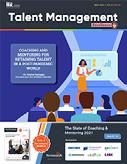
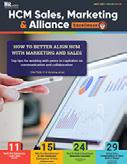

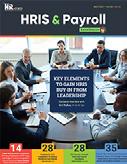
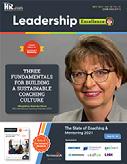 Winkle
Winkle
I regularly read and contribute to Leadership Excellence and Talent Management Excellence. I use many of the articles I read to augment my own presentations and I often share the articles with my clients. They are always quick, right on target for the latest issues in my field, and appreciated by my clients. If you want to stay up to date on the latest HR trends, choose a few of the different issues from the Excellence series of publications.

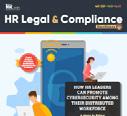
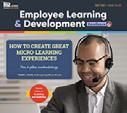
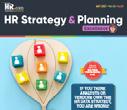
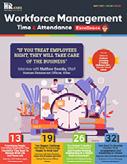

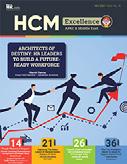
We’re eager to hear your feedback on our magazines. Let us know your thoughts at ePubEditors@hr.com
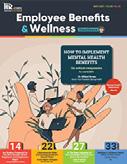
 Rensis Likert Professor, Ross School of Business, University of Michigan Partner, The RBL Group
Rensis Likert Professor, Ross School of Business, University of Michigan Partner, The RBL Group
WHY EXCELLENCE PUBLICATIONS?
Julie
Giulioni Author, Virtual /Live Keynote Presenter, Inc.’s Top 100 Leadership Speakers
Dr. Beverly Kaye CEO, BevKaye&Co.
4 Employee Benefits Trends To Watch In 2023
Offering a comprehensive benefits package will be critical for organizations looking to retain and attract top talent in 2023
By Sheri Atwood, SupportPay
This past year has been exhausting for employers across the country and all over the globe. In the blink of an eye, companies found themselves in an employee market and learned the hard way that employee benefits have never been more important. With this great shift, employers found it challenging to keep up with the needs and expectations of their employees, and with the current economic conditions, retention will be key to a company’s success.
From ‘The Great Resignation,” “quiet quitting,” and an increase in job hopping, employees have been willing to leave their current roles if they are dissatisfied or underappreciated. Employees have demanded better pay, work-life balance, comprehensive benefits, and more. As a result, more than 4 million people have left their jobs each month in the U.S. as of July 2022.
There has been a general slump in the economy for some time now, and company leaders are having to make difficult decisions when it comes to budgeting and cutting employee benefits. However, with massive layoffs and hiring freezes, companies will need to retain their employees. One way of doing this is by offering a wide range of benefits beyond basic benefits such as vacation days, 401(k) plans, and health insurance. According to an employee satisfaction
survey, 78% of employees would stay in their current job if benefits were attractive.
As company leaders and HR managers evaluate their employee benefits in the new year, here are four trends to keep in mind:
1. Comprehensive benefits packages will continue to be offered despite the economic downturn
With “quiet quitting,” the tight labor market, and “The Great Resignation,” company leaders and HR managers learned last year that comprehensive benefits packages are imperative to attracting talent and retaining existing employees. According to Gallup, 64% of employees named “pay and benefits” as a critical factor in taking a new job. The war for talent will continue to drive benefit enhancements, and a recent survey from Mercer found that 70% of all large employers are planning benefit enhancements for 2023. This will be especially important in the new year with a weakened economy, and we’re already seeing massive layoffs, particularly in the technology and banking sector. HR decisionmakers will need to lean on competitive benefits packages that focus on prioritizing health, wellness, and employee outcomes in order to keep top talent.
Employee Benefits & Wellness Excellence presented by HR.com January 2023 7 Submit Your Articles
COVER ARTIClE
2. Financial well-being will be an area of concern
According to a recent survey from PWC, one in four full-time employees is working more jobs than in previous years to make ends meet, and 56% are stressed about their finances. Research has shown that financial well-being is tied to retention, productivity, and an employee’s overall mental and physical well-being. With economic uncertainty and soaring inflation, financial well-being will be a top concern in 2023, and employers and HR managers will be turning to programs like SupportPay, to protect their employees’ mental health and financial well-being.
3. Companies will focus on benefits for each life stage
During the pandemic, employee needs changed dramatically. It was a major hardship that brought to light the challenges employees are facing with parenting, caregiving, and many other issues. As a result, companies began implementing supportive, family-friendly benefits like expanding paid family leave, childcare, family building, and elderly care assistance. According to a survey from MetLife, 80% of employers said that meeting the needs of employees across all life stages and the diversity spectrum is an important benefits objective. While companies are heading in the right direction, a number of groups are still left behind, such as employees who are single parents or those navigating
a divorce or separation. As we move into 2023, we will see companies improving their benefit programs by adding more features and implementing holistic approaches that address each life stage.
4. Affordability will be top of mind
In an ever-changing benefits market, affordability is crucial to employers when selecting and offering competitive employee benefits. Innovative companies are offering unique solutions for employees’ needs that can also increase productivity and deliver clear ROI, allowing employers to reduce costs while also enhancing their offerings. Employees who receive affordable benefits are often less stressed financially, which can positively affect their performance in the workplace. Better workplace performance leads to improved productivity, decreased turnover, and a better bottom line for the company.
Despite the economic downturn, employers should continue to offer employee benefits that address all life stages. Offering a comprehensive benefits package will be critical for organizations looking to retain and attract top talent in 2023. Keep these trends in mind as you evaluate your employee benefits package in the new year.


Employee Benefits & Wellness Excellence presented by HR.com January 2023 8 Submit Your Articles
4 Employee Benefits Trends To Watch In 2023
Sheri Atwood is the Founder and CEO of SupportPay, the only co-parenting solution that manages child support payments, alimony, expenses, custody, and communication. Would you like to comment?
A Financial Wellness Benefit That Goes Beyond Education To Real Action
Increase productivity by reducing financial stress and distraction
By Charles Krawitz, Alliant Credit Union
Widespread financial stress has made membership in credit unions a critical employee benefit. However, budgeting tips are simply not enough: Credit unions are rising to the challenge to help employers offer impactful

financial products and services to their workforce. Together, employers and credit unions can incentivize savings, reduce money lost to high fees and provide a suite of financial products that employees can use to achieve real
prosperity. And with prosperity comes peace of mind—and ultimately, greater focus and productivity at work.
It should come as no surprise that employer-sponsored financial
Employee Benefits & Wellness Excellence presented by HR.com January 2023 9 Submit Your Articles
Top Pick
Why Should Companies Care About Their Employees’ Financial Wellness?
The burden of financial stress on employees is real. More than 60% of Americans live paycheck to paycheck—including nearly half of those that earn more than $100,000 per year, according to LendingClub and PYMNTS.com. Credit unions that offer financial wellness products and services do so, in part, because they’ve seen their members struggling to make ends meet.
The byproducts of financial stress, including anxiety, depression, loss of confidence, and relationship issues, don’t stay confined to one’s personal life. According to a recent survey conducted by Bankrate and Psych Central, 42% of adults in the U.S. suffer negative mental health impacts related to money. It is no coincidence that at the same time, workers are more stressed about their finances than at any time since 2008, worker productivity has fallen at the fastest rate since 1983.
According to a study from the Financial Wellness Lab of Canada and Ceridian, employee worries about finances cost employers $664 billion in lost productivity each year. For this reason, many organizations have moved from the sidelines to the frontlines to provide their workforce with creative ways to prosper financially. In a recent eMoney
survey of 500 employers, 91% of respondents agreed that offering financial wellness benefits is important.
Education is Only Half the Battle; Real Action is needed
It’s important not to equate financial education with financial wellness products and services. “Twenty percent of your income should go to savings” is a useful tip. Now, imagine being able to follow up that tip with, “Here is a savings account with matching funds and cash rewards from your employer and its credit union partner that will help you get there.” Turning a suggestion into action and then incentivizing that action greatly increases the likelihood that employees will adopt these best practices. It’s important to create an environment where employees can put their financial education to good use, without getting squeezed by high fees, overdraft punishment and a lack of incentives to save. Credit union partnerships provide tangible financial products—many with matching funds that put money in the employee’s pocket— that make it easy for employers to help their workforce achieve financial prosperity, without taking on the burden of administering such programs themselves.
That’s why many companies find it attractive to work with a financial partner to tailor a program and offer differentiated financial products specific to their organization. In the current
rate environment, credit unions are offering some of the highest savings rates among all other financial institutions. Since credit unions re-invest their profitability for the benefit of their members and not shareholders, they can pass on greater benefits to their members as part of a structured, comprehensive and ongoing program.
Do banks provide these kinds of benefits? A few do; however, banks are not intrinsically motivated by employees’ outcomes; they do it to achieve goals that benefit shareholders. This means that typically, banks may levy more and higher fees, offer lower savings rates and charge higher interest rates on loans than credit unions. Banks also typically can’t match the level of personal service offered by credit unions. A credit union’s top priority is the satisfaction of its members. Ideally, partnering with a credit union should offer digital banking nationwide, including 24/7 customer service, that comes at no cost to the employer or its employees.
While customer satisfaction is crucial to retaining members, ease of use is the key to getting them involved in the first place. Credit unions are known for being customer-friendly and easy for members to work with. Employers embarking on a credit union partnership will find that that’s also true for the initial setup and ongoing management of the relationship. Instead of taking on the labor of recruiting
Employee Benefits & Wellness Excellence presented by HR.com January 2023 10 Submit Your Articles
wellness benefits have quickly gone from niche to necessary.
A Financial Wellness Benefit That Goes Beyond Education To Real Action
employees to join, the Human Resources department becomes the customer.
What to Expect from an Employer/Credit Union Partnership
Offering credit union membership as an employee benefit is easy to implement because the credit union does almost all the work, while the employer remains the face of the benefit. There is also typically no fee to the employer, so implementing the benefit requires no direct cost and very few internal resources. When launching with a new client, for example, Alliant Credit Union requires the involvement of only two employees at the client company, one in HR and the other in an internal communications role. Alliant coordinates with these internal contacts to craft and disseminate customized, co-branded content, including
● Employee communications
● Educational and information material
● A landing page for the employer’s members
● Infographics and website banners to get the word out and promote employee uptake
● Physical signs, banners and handouts to be placed in office lobbies and common areas
The best credit unions offering memberships as an employee benefit will emphasize that the program is a marathon, not a
sprint—and they’ll let the employer take all the credit. Alliant, for example, offers an ongoing slate of content and touchpoints, including live webinars and seasonal blog posts on financial empowerment topics like college savings, estate planning and smart gifting. Organizations should choose a partner with products and services that go beyond the standard checking and savings accounts, including
● Emergency savings accounts
● Certificate of deposit products
● Mortgages, home equity, auto and other personal loans at discounted rates
While some of these products and services may be offered by third parties in partnership with the credit union, members should expect the same high level of service and co-branding.
The positive impact of financial wellness products as an employee benefit goes beyond a company’s current workforce. In addition to bolstering retention and tamping down turnover, these benefits can help attract top talent, improve company culture, boost participation in other benefits, and help an organization garner awards and recognition.
Equipping employees with best-in-class products that eliminate fees, incentivize saving and encourage financial hygiene ensures that pay raises contribute to alleviating their financial stress
rather than being used to pay high-interest loans, insufficient funds penalties and exorbitant credit card fees.
The bottom line: employees are happier, more engaged, and more productive at work when they have less financial stress at home. Credit unions, with their focus on members rather than shareholders and their long history of embracing principles of social responsibility and equity, are a logical choice for such initiatives. Credit union membership gives employees more control over their finances and makes them better equipped to achieve their financial goals.
Charles Krawitz is the Chief Capital Markets Officer of Alliant Credit Union with executive responsibility for their Alliant PROSPER employer partnership program. Would you like to comment?

Employee Benefits & Wellness Excellence presented by HR.com January 2023 11 Submit Your Articles
A Financial Wellness Benefit That Goes Beyond Education To Real Action
What You Can learn About Benefit Packages From Series A Startups
Strong benefits can benefit both employees and employers
By Ken Babcock, Tango
Despite the recent waves of mass layoffs, employees are still resigning at record numbers. In November, 4.2 million people called it quits—marking the 18th straight month where more than 4 million people voluntarily left their jobs.
While most companies are figuring out how to do more with less, large corporations (think: enterprises with 5,000+ employees) are said to be winning the
hiring game right now. With comfortable profits, steadier job security, and more comprehensive benefit packages, big companies are more resistant to economic downturns—a big plus for job-seekers.
How Can Small Companies Compete for Talent?
For smaller companies and early-stage startups, it can be tough to compete with large corporations in the

Employee Benefits & Wellness Excellence presented by HR.com January 2023 12 Submit Your Articles
war for talent. But with some thoughtful creativity and a clear understanding of what people truly value, even a Series A startup can turn its benefits package into a competitive advantage.

In a recent survey conducted by Comparably, employees ranked both large and small businesses over a 12-month period. It found that companies that paid exceptional attention to the health and wellness of their employees exceeded expectations. Whether it’s a company the size of Microsoft or a company with 500 or fewer employees, meeting employees where they are with what matters to them plays a critical role in what makes a workplace attractive.
That’s what I’ve found as I lead the team at Tango—a documentation tool that automatically creates how-to guides. As a remote-first company with a Series A fundraise under our belt, we’ve intentionally tailored our benefits to not only cover the essentials but also to equip our team members to be their best at work and outside of work. Here’s a look at how we approach benefits at Tango.
Health & Wellness
Companies can’t succeed without healthy employees—so investing in their physical, mental, and financial wellness is crucial. When employers support their people with the resources to take care of themselves and their families, they empower healthier and happier teams. Here are a few benefits we provide at Tango to support our team’s health and wellness:
● Full medical, dental, and vision coverage with 100% employer contribution and an HSA for qualified plans
● 4 free therapy sessions annually through Spring Health
● 401(k) plan through Guideline
● 12 weeks of paid parental leave
Flexible Work Perks
Flexible work was once considered a perk in and of itself, but now it’s becoming the norm. Still, there are opportunities for companies to enhance the remote or hybrid work experience for their employees. As a
Employee Benefits & Wellness Excellence presented by HR.com January 2023 13 Submit Your Articles
What You Can Learn About Benefit Packages From Series A Startups
remote-first company with a team of 30 distributed across the country (and two employees overseas), Tango provides these remote-specific benefits to equip team members with everything they need to do their best work—wherever they work.
● Monthly co-working stipend with Deskpass
● Monthly stipend for weekday meals delivered through Uber Eats
● Stipend for each new hire to invest in productivity tools of their choice—like software, gadgets, planners, and journals
● Yearly Learning and Development stipend for team members to grow and hone their craft with courses, workshops, books, coaching, memberships, or conferences
● 6 personal volunteer days for team members to give back to their communities
Ownership & Equity
The tight labor market has made it even harder for companies of all sizes to attract and retain talent—but employers can gain a competitive edge by giving their employees ownership in the company’s value and success.

At Tango, we offer both competitive compensation and an annual Equity Refresh program for all employees. In addition to new hire grants and performance-based grants over time, Tango’s unique time-based Equity Refresh program gives every team member additional equity for every year they’re at the company.
Work-life Balance
Every company wants to be a great place to work, but the companies that stand out are the ones that can encourage their employees not to work. By offering perks that highlight and celebrate life outside of work, employers show their commitment to supporting the whole person—not just their job title. These perks give our team members a chance to get outside and away from their screens (and to share fun photos of their adventures with the rest of the team on Slack!).
● Unlimited PTO, 10 company holidays, and birthdays off
● A subsidized National Parks Annual Pass
● Subsidized Roller Skates (yes, seriously)
● Unlimited gifting of Mango-related snacks (our team members are called Mangos)
Strong Benefits Can Benefit Both Employees and Employers
Regardless of size or stage, companies should align their benefits with what employees actually value—not what they think employees value. Employers that take extra care to build a human-centered benefits package will gain some invaluable benefits themselves: a happier, healthier, more motivated workforce, and a competitive edge in attracting and retaining top talent, no matter the state of the economy.
Ken Babcock is the CEO and Co-Founder of Tango. Before setting out on a mission to help people be their best at work, he spent 4+ years at Uber riding the rollercoaster of a generational company. After getting his feet wet with entrepreneurship at Atomic VC, he went to Harvard Business School where he met his co-founders.
Would you like to comment?

Employee Benefits & Wellness Excellence presented by HR.com January 2023 14 Submit Your Articles
What You Can Learn About Benefit Packages From Series A Startups
Why Disaster Insurance Should Be In Your Employee Benefits Program
Don’t let employees get swept up in financial ruin
By Steve Gaer, Recoop Disaster Insurance
Let’s face it, remote work is here to stay. Whether that means your workforce is 100% remote or you enact a hybrid workplace policy, or your organization is still refining its policy for remote work. “WFH” is more popular than ever as 70% of U.S. office workers operate with a hybrid work schedule Not to mention that 62% of U.S. companies are planning on offering more remote work opportunities in the future.
Who can blame them, or their employees, as experts continue to express the many benefits of operating remotely. Employers save upwards of $22,000 per full-time remote employee per year. Those bottom-line savings can be used in a variety of ways, including increasing employee pay or offering new benefits to stand out among the competition.

Employee Benefits & Wellness Excellence presented by HR.com January 2023 15 Submit Your Articles
Top Pick
While remote work appeals to current and prospective employees, that doesn’t mean it comes without challenges. The biggest challenges can come in the form of logistical, technological, and security from a business contingency standpoint. But did you ever think those concerns would be amplified by the increasing (and impending) threat of natural disasters?
It’s not a matter of If. It’s a matter of When
Consider this: Natural disasters are on the rise. In fact, data shows that 97% of U.S. counties have experienced a federal or state-declared disaster in the last 10 years. And the effects of Mother Nature can be expensive let alone disruptive.
Take Hurricane Ian for example. Its catastrophic damages to the Southeast are expected to yield more than $67 billion in losses, making it one of the most expensive severe weather events in U.S. history.
Imagine how the impact a disaster of that magnitude – or even a portion of it – could alter your workforce’s
ability to continue operating like normal with so many teammates scattered remotely around the country.
now is the Time to Fill Gaps in Your Corporate Contingency Plans
In this era of remote and hybrid work, power is now put into the hands of employers to help their workforce rebound faster from disaster. Not to mention that it can help employers protect their bottom line. The number one way to do it is by offering disaster insurance as part of your employee benefits program.

Access to disaster insurance allows your employees to receive fast, no-strings-attached cash to use how they see fit to cover the gaps in typical homeowners’ and renters’ policies. It provides flexible funds for homeowners to quickly use as they see fit, like paying for temporary housing or entry to a coworking space, so they’re able to keep up with the speed of work while their home office is getting reconstructed.
Let’s break down how it can benefit your workforce, as your remote contingency plan starts with giving
Employee Benefits & Wellness Excellence presented by HR.com January 2023 16 Submit Your Articles
Why Disaster Insurance Should Be In Your Employee Benefits Program
employees peace of mind. Here’s how you can emerge as an advocate for your employees:
● Support employees as they weather the financial storm. Most traditional insurance policies fall short of covering the total cost of a disaster. In many cases, those costs can soar as high as $54,000, based on the average home value in February 2021 according to Zillow. With that in mind, it makes sense that disasters are the fifth most common cause of bankruptcies in the U.S. That’s why offering benefits like disaster insurance can help your workforce move past a disaster in a timely way.
Access to timely, flexible funds lets them feel supported in their time of need and lightens the heavy financial burden after disaster strikes.
● Champion employees’ emotional well-being. By making disaster insurance an important component of your employee benefits program, you’re also able to better support your employees’ mental health in their time of need.
In fact, the average employee spends 13 hours a month worrying about their personal finances at work. Disaster insurance can lessen the mental and financial toll on your employees because they have easy and fast access to post-disaster recovery cash.
Looking out for your employees with disaster insurance offerings as part of your employee benefits program also gives way to maintaining your business’ bottom line. Here’s a closer look at how:
● Defend long-term productivity. Let’s face it, when your employees recover faster from the effects of Mother Nature, they can return to work faster. Express cash benefits from a disaster insurance payout can help keep your remote workforce up and running by offering timely help.
● Boost retention rates. As a hiring manager or HR professional, you know employee retention is essential. With the potential for thousands
of people being displaced from their homes or jobs after severe weather, offering security and stability in the form of disaster insurance helps them feel better equipped to get back to life faster.
Not only is your virtual staff able to rebound better, but they’ll also feel connected and cared for by your company. Being there for your employees can pay dividends when it comes to retaining (and even recruiting) high-quality talent.
Employers have the resources and ability to give their employees the protection they need against the impending threat of a natural disaster. Don’t roll the dice on your employees’ well-being and your company’s bottom line because it’s only a matter of time before disaster strikes. Instead, emerge as a top employer by helping protect their financial and emotional well-being against the damages caused by Mother Nature.
Steve Gaer is the President of Recoop Disaster Insurance. Before joining Recoop, he spent over 10 years in insurance industry leadership roles at Marsh McLennan. There, he was responsible for the property and casualty program insurance division. He began his career as an associate and then a shareholder with Ahlers & Cooney, P.C. Dedicated to bringing together his leadership, business and legal skills to better his community, Gaer spent 22 years as a city council member and then four terms as West Des Moines Mayor.
Would you like to comment?

Employee Benefits & Wellness Excellence presented by HR.com January 2023 17 Submit Your Articles
Why Disaster Insurance Should Be In Your Employee Benefits Program
The Housing Crisis Is Also A Workplace Crisis
What can employers do to address this challenge?
By Matt Bahl, Financial Health Network
Homeownership has long been a hallmark of achieving the so-called American Dream. A recent survey found that 74% of Americans rank owning a home as the primary indicator of financial security and prosperity. Home ownership even topped being able to retire (66%) and having a successful career (60%). Yet, the largest generation in today’s workforce (millennials) believes that home ownership is out of reach. The generation following millennials, Gen Z, also believes home ownership is unattainable. The gist of the concern is that home ownership is not affordable
Homeownership: What’s the Holdup?
There are a number of factors likely contributing to this sense among younger workers (although this concern is not limited to younger people). First, wage growth has not kept pace as home prices have surged. Compounding this has been a general slowdown in new housing construction during a time when homebuying accelerated due to the Covid-19 pandemic and, at the time, low-interest rates. During this same period, in many housing markets across the country, private equity and other investors purchased large swaths of single-family homes further driving up the price of houses while diminishing the stock of starter homes for first-time buyers.
To add to this tumult, credit and debt levels are now worsening. After significant improvement during Covid-19, rising inflation and interest rates are pushing homeownership even further out of reach. Finally, younger generations are still reeling from the impact
of student debt. As many as 81% of adults with student debt have delayed major life milestones, such as buying a home. Even with the Biden administration’s recent student debt relief program, at least one analysis suggests that the student loan crisis will regenerate within 4 years.
Renters have not fared better. According to the Pew Research Center, rent increases have outpaced inflation and wage growth, which is particularly challenging given that renters tend to skew toward the lower end of the economic spectrum. Moreover, nearly half of the renters spend 30% or more of their income on rent, with 23% spending 50% on rent. This makes saving for things like a down payment more difficult.
Many workplaces have moved to remote or hybrid options as if this was not enough. This places an even greater emphasis on housing since people’s homes are now their de facto workplace. The broader economic dynamics paired with changing work norms have helped translate the housing crisis into a workplace crisis.
How Can Employers Help Employees Face the Homeownership Crisis?
So how should employers think about addressing this challenge? What are the models and approaches that may be useful for employers as they compete for talent and seek to address a myriad of financial health concerns? Below are some existing examples that employers may want to consider:
Employee Benefits & Wellness Excellence presented by HR.com January 2023 18 Submit Your Articles
● Employer-Sponsored Housing Support: employer-sponsored housing support is not a novel solution, but one that has not broadly scaled. Employers such as Facebook, Yale University, and tomato magnate Red Gold have programs where they provide cash support to employees for home purchases. The details of the programs vary, but ostensibly they are designed to help employees afford down payments.
● Resurgence of “Company Towns”: the idea of company towns may seem like a nostalgic dream. But at least one company, Pella, is seeking to reinvent the company town model. Pella, a doors and windows manufacturer in rural Iowa, is investing $30 million dollars in new housing and amenities as they seek to draw talent to their company headquarters and provide a deep sense of community and belonging.
● Broader Credit and Debt Strategy: at its core, the housing challenge is nested in the broader credit and debt crunch facing many workers. This begs the question of how should employers

think about housing as part of their broader set of financial health solutions. At the Financial Health network, we define credit and debt benefits as those that help employees avoid borrowing for short-term needs (often at high rates), get them on a path to building long-term assets (like buying a home), and assist them in managing and repaying existing debt (like student loan or medical debt). The contours of these programs will vary based on the needs of the workforce, but having a comprehensive credit and debt benefit strategy can help an employer ensure they are designing a fair and equitable program that helps employees manage their full spectrum of credit and debt challenges.
There is ample evidence that helping individuals get into homes has tangible benefits for employers. From improved retention rates to increased employee engagement, employers stand to benefit from allowing their workforce to become homeowners.

As Vice President, Workplace Market Lead at Financial Health Network, Matt Bahl builds relationships with employers committed to advancing financial health for their workforces. He believes it takes a movement to improve workers’ financial lives, connecting HR and benefits leaders with the Financial Health Network’s expertise and solutions to create a strong financial health ecosystem.
Would you like to comment?
Employee Benefits & Wellness Excellence presented by HR.com January 2023 19 Submit Your Articles
The Housing Crisis Is Also A Workplace Crisis
Betting Big On Flexibility At Work

It is time to focus on time as the benefit of choice at work
By Marcus Mossberger, Infor
My first car was a 1976 Volkswagen Super Beetle which I named “the Stinger” as it was black, but I had replaced the dented trunk with a salvaged one that was bright yellow. I remember sticking my head out the window on extremely cold days so I could see what was in front of me, as the windshield defrost did not work. Back then features like power locks, power
windows and power steering were luxuries… today they are standard. The world of employee benefits has changed significantly as well over the last few decades. Some perks have become permanent as employees fully expect them as part of a conventional benefits package, while new ones are constantly added and assessed. Have flexible arrangements
Employee Benefits & Wellness Excellence presented by HR.com January 2023 20 Submit Your Articles
Top Pick
like remote and part-time work become standard, or will they remain relegated to the fringe as the world attempts to return to “normal”?
Workplace benefits have evolved significantly since Caesar Augustus started giving his retiring soldiers a pension.

Over the years, organizations have added life insurance, health benefits, paid time off and other incentives to recruit and retain people. Today industries like healthcare are acutely aware of the need to up their game in the employee benefits arena. In a recent article in Modern Healthcare, Sheena Singh, senior vice president in Aon’s national healthcare division suggests “All of the top priorities are about the human capital and talent focus because without that asset, they’re not going to be able to provide the (core) services … around patient care and management, and that can have downstream effects to safety and other things.”
As the labor market has caught fire (just like my first car), companies are going to extremes by offering everything from booze to Botox. Despite these creative (and frequently questionable) offerings, the most valuable commodity on the planet has stayed the same since Caesar started this trend: the gift of time
Instead of attempting to one-up the company down the street by offering delivery of custom-made
meals to employees’ pets, we would be better served by getting back to the basics and betting big on flexibility at work. Forward-thinking organizations are embracing remote/hybrid work, job sharing, compressed work hours (think 4-day week), part-time work, sabbaticals, and phased retirements. Some are still convinced that the pandemic effect will eventually wear off and we will revert back to the way things were before we were forced to adopt nontraditional ways of working. But Boomers and Gen X have reprioritized, while Generations Y and Z have demonstrated a willingness to forgo financial and professional gains for personal aspirations including quality time outside of work.
Just as today’s automobiles are advancing to self-driving status, companies need to develop into elastic enterprises that can adapt to progressive socioeconomic norms. It is time to focus on time as the benefit of choice at work.

Employee Benefits & Wellness Excellence presented by HR.com January 2023 21 Submit Your Articles
Betting Big On Flexibility At Work
Marcus Mossberger is a Future of Work Strategist at Infor. Would
you like to comment?
HRCI® & SHRM® CERTIFICATION PREP COURSES
GROUP RATES AVAILABLE
For HR Professionals
Show that management values the importance of the HR function, and has a commitment to development and improvement of HR staff.
Ensure that each person in your HR department has a standard and consistent understanding of policies, procedures, and regulations.
Place your HR team in a certification program as a rewarding team building achievement.
For Your Organization
Certified HR professionals help companies avoid risk by understanding compliance, laws, and regulations to properly manage your workforce.
HR Professionals lead employee engagement and development programs saving the company money through lower turnover and greater productivity and engagement.
A skilled HR professional can track important KPIs for the organization to make a major impact on strategic decisions and objectives, including: succession planning, staffing, and forecasting.
HR.com/prepcourse CALL TODAY TO FIND OUT MORE 1.877.472.6648 ext. 3 | sales@hr.com
1 Less expensive than a masters or PhD program, and very manageable to prepare with
2. legislation and best practices
3. Recognized, Industry benchmark, held by 500,000+ HR Professionals
Group Rate Options
We offer group rates for teams of 5+ or more for our regularly scheduled PHR/SPHR/ SHRM or aPHR courses.
For groups of 12+, we can design a more customized experience that meets your overall length of the course.
Groups rates for HRCI exams are also available as an add-on.
All group purchases come with 1 year of HR Prime membership for each attendee to gain the tools and updates needed to stay informed and compliant
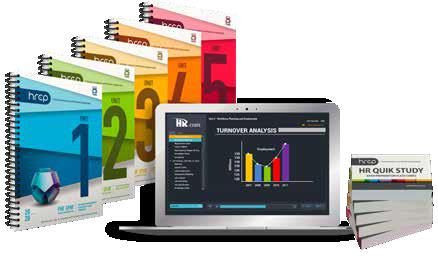
CALL TODAY TO FIND OUT MORE 1.877.472.6648 ext. 3 | sales@hr.com | HR.com/prepcourse
1 2 3
Great Expectations: Workplace Health And Wellness Trends In 2023

Femtech is the future
By Sammy Chown, Carebook Technologies Inc.
Thenature of work has been permanently altered as a result of the pandemic. With this, workplace health and wellness (H&W) programs have also changed as employers assume greater responsibility to keep up with greater expectations from employees. Through 2022, certain trends were realized – from broader mental health offerings to solutions that accommodate employees who are in-person and/or remote. Moving into 2023, here are some predicted trends in workplace health and wellness:
mental Health is Organizational Health
At the end of September last year, the WHO released a report titled WHO guidelines on mental health at work that outlined the risks to mental health (or psychosocial risks) and how to promote and protect it in the workplace. Though not new, it was a call to action for organizational modifications to mitigate psychosocial risks in the workplace. In many ways, the report challenges the typical approach to mental health in workplace health and wellness programs
Employee Benefits & Wellness Excellence presented by HR.com January 2023 24 Submit Your Articles
where it was targeted as an individual responsibility. Yet, this transition had been manifesting for quite some time as workplaces attempted to pivot during the pandemic, offering wellness breaks or greater flexibility as caregiving responsibilities shifted.

In 2023, we anticipate that employers will continue to make organization-level changes that support the mental health of their employees. Human Resources Managers are well-positioned to lead changes and advocate for improved H&W programs that support mental health in diverse ways. These will include additional assessments that appraise the job and work environment of employees; increased awareness of mental health conditions; combatting stigma at all levels of the organization through communication campaigns and training; and, accommodations for those who live with mental illness. We are also particularly hopeful about opportunities that consider the intersection of mental health and equity, diversity, and inclusion, such as additional workplace support for individuals with disabilities.
Facilitating Financial Well-Being
On the heels of various social changes and associated impacts on the economy, experts are warning of a recession beginning this year. A 2022 Bank of America report found that 1 in 2 employees do not believe they will make ends meet with the current rate of inflation. Yet, this often less-considered dimension of health is quickly becoming an aspect of employee H&W programs that employees and employers are looking for. The same report states that 80 percent of employees think their employers should support their financial wellness, and – fortunately – 97 percent of employers say they are in some way responsible.
Due to the clear impact of financial wellness on attraction, retention, satisfaction, and productivity, related solutions are predicted to grow in 2023. Financial coaching, educational awareness, and digital tools to help employees reach their financial goals are pertinent solutions. All employees can benefit from this support, especially those with lower socioeconomic status. As more and more employees require this form of support, employers are expected to offer relevant services in order to avoid detrimental impacts on their bottom line.
FemTech is the Future
For some, this term may be new, but it’s one that’s bound to be seen more often! FemTech refers to technology that addresses female health, ranging from menstruation and menopause to sexual health and contraception, and fertility – among others. A 2022 article by McKinsey & Company reported that FemTech funding had spiked to $2.5 billion in 2021, with a market size ranging from $500 million to $1 billion. Other estimates, which use different classifications for what is considered FemTech, a project that the global FemTech market size will grow from $51 billion in 2021 to around $103 billion USD by 2030. Importantly, focus on, and investments in, FemTech are increasing.
For many years, scientific research into female health was lacking, which led to a plethora of detrimental outcomes. With strong efforts to combat stigma related to female and women’s health, we anticipate
Employee Benefits & Wellness Excellence presented by HR.com January 2023 25 Submit Your Articles
Great Expectations: Workplace Health And Wellness Trends In 2023
further growth in FemTech that empowers females and educates the masses about female health, including but not exclusive to menstruation, sexual health, and reproduction. Slowly but surely, greater education and tools will benefit the H&W of women across the globe, especially for communities in most need.

Empowered Employees
It shouldn’t be surprising that remote and hybrid work is here to stay. As noted by MetLife in their recent report titled, The Rise of the Whole Employee: 20 Years of Change in Employer-Employee Dynamics, the tight labor market is empowering employees to seek job opportunities that meet their lifestyle needs, including benefits and where and when they work. In a recent Aon report, almost two-thirds of employees have halted a hiring process due to employee value propositions that they were not impressed by. This is especially true for younger generations of employees who have more expectations from their employers than previous generations.
It is becoming increasingly important for employers to recognize how organizational structures and work environments are part of overall employee H&W. For instance, employers need to reframe their views on remote and hybrid work as a threat to productivity – employers feel that working from home either does not influence productivity or generally has a positive influence on productivity. An evolution from traditional ways of working is necessary in order to remain competitive. Beyond flexible work, additional solutions that support caregivers, health spend that employees can utilize for their unique purposes, and access to digital solutions that are centralized and personalized are just a few examples of trends that will continue to be explored this year.
Health and wellness programs must adopt holistic, multi-dimensional approaches to support their employees. Further investment and offerings in mental health, financial wellness, FemTech, and within a changing work landscape, are predicted to occur. Fortunately, each of these areas provides opportunities for EDI to be considered in tandem so employers can combat stigma and support
communities that have historically not been considered. It’s time for employers to acknowledge the role they play in their employees’ H&W and continue to make organization-level changes for the benefit of all employees. In 2023, we have great expectations for workplace H&W that supports all employees wherever they are.
References
● https://www.who.int/publications/i/ item/9789240053052
● https://business.bofa.com/content/dam/flagship/ workplace-benefits/id20_0901/documents/2022-WBR. pdf
● https://www.mckinsey.com/industries/ healthcare-systems-and-services/our-insights/ the-dawn-of-the-femtech-revolution
● https://www.precedenceresearch.com/femtech-market
● https://www.metlife.com/content/dam/metlifecom/ us/noindex/pdf/ebts-2022/MetLife_EBTS_2022.pdf
● https://www.aon.com/getmedia/af5a393a-fe4a-426e9ab4-758c49921ca2/A-Guide-To-Workforce-Resilience. pdf
Sammy Chown holds a Master of Science in Public Health and Health Systems, and a Bachelor of Science in Kinesiology with a Minor in Religion and Diversity. Ms. Chown’s thesis investigated the association between learning disabilities and mental illness in emerging adults. Her education focused on epidemiology, and she has experience working with older adults, individuals with multiple sclerosis, and individuals with spinal cord injuries in an exercise setting. Ms. Chown is passionate about the intersection of science and social science, especially when accessibility for disabilities, both visible and invisible, is involved.
Would you like to comment?
Employee Benefits & Wellness Excellence presented by HR.com January 2023 26 Submit Your Articles
Great Expectations: Workplace Health And Wellness Trends In 2023
Align your brand with this year’s State of the Industry hot HR topics and showcase your expertise


Sponsor any of this year’s state of the industry research topics and come away with your very own affordable and branded research report and infographic, establish yourself as an industry thought leader by presenting at a one-day Virtual Event, and bolster sales through the generation of qualified leads.
Sponsor any of this year’s state of the industry research topics and come away with own affordable and branded research report and infographic, establish yourself as an thought leader by presenting at a one-day Virtual Event, and bolster sales through the generation of qualified leads.
See
hot industry
Hottest Trends in Benefits Virtual Event
Hottest Trends in Benefits
Virtual Event
Jan 25, 2023
Learn more at: hr.com/BenefitTrends VirtualEvent
New Ideas and Tools for Effective Performance Management Virtual Event
The State of Contingent Work
The State of Contingent Work
The Future of Workplace Trends
Jan 25, 2023
Learn more at: hr.com/BenefitTrends VirtualEvent
The Future of Workplace Trends
Jan 31, 2023
Learn more at: hr.com/Performance ManagementVirtualEvent
Jan 31, 2023
Feb 7, 2023
Feb 7, 2023
Feb 8, 2023
Feb 8, 2023
Learn more at: hr.com/Performance ManagementVirtualEvent
Learn more at: hr.com/contingent workresearch
Learn more at: hr.com/contingent workresearch
Learn more at: https://hr.com/ workplacetrends
Learn more at: https://hr.com/ workplacetrends
The State of Human Experience in the Workplace
The Future of Upskilling and Employee Learning
The Future of Upskilling and Employee Learning
Solving for Today’s Workforce Shortages Virtual Event
Solving for Today’s Workforce Shortages Virtual Event
Feb 15-16, 2023
Learn more at: hr.com/ HumanExperienceResearch
Feb 15-16, 2023
Feb 22, 2023
Learn more at: hr.com/ HumanExperienceResearch
Learn more at: hr.com/ upskilling
Feb 22, 2023
Learn more at: hr.com/ upskilling
Feb 23, 2023
Learn more at: hr.com/workforce shortagevirtualevent
Feb 23, 2023
Learn more at: hr.com/workforce shortagevirtualevent
Align your brand with this year’s State of the Industry hot HR topics and showcase your expertise
See list of hot industry research topics below and give us a call to get started. A State of the Industry Research & Virtual Event Sponsorship Opportunity Contact us today to get started at sales@hr.com | 1.877.472.6648 | hr.com/industryresearch
Workplace
The State of Human Experience in the
New Ideas and Tools for Effective Performance Management Virtual Event
A State of the Industry Research & Virtual Event Sponsorship Opportunity Contact us today to get started at sales@hr.com | 1.877.472.6648 | hr.com/industryresearch
list of
research topics below and give us a call to get started.
How Workplace Benefits Can Empower Black Employees Every Day
Helping people of color build a stronger future
By Aaron Harding, Morgan Stanley at Work
Black History Month can be a golden opportunity to engage with the community on a deeper level through events and conversations around company culture, shared goals and values, and investing in the future.
Marking
As a part of this time, it’s key that your company’s allyship, leadership and everyday actions align with these mountaintop moments each and every day. One surefire way you can make a sustained impact in supporting your Black employees is through your workplace benefits.
Focus on the Complete Financial Picture
For employees to feel heard, seen, accepted, and be able to thrive no matter their differences, start by understanding each perspective. Diverse employee groups may have different priorities, needs, and goals in terms of their career trajectories and what they are looking for from their employers. Your workplace benefits are a tool you can use to better understand them, meet them where they are today, and make a real impact on their financial journey.
Many Black workers face the accumulated impact of generations of discrimination and ongoing wealth disparities, so some of your Black employees may have more financial ground to make up. This helps
shed light on findings from McKinsey that show that, compared with other racial groups, Black survey respondents are especially eager to grow and protect wealth, save for emergencies, pay mortgages and monthly bills, and not burden their families with debt should they die prematurely.1
Yet making strides in these areas is a challenge: The median wealth of the average white family remains nearly eight to 10 times higher than the average Black family. That said, the potential to make a difference is huge: If we were able to bring Black American wealth up to parity with white Americans over the next 10 years, it would add $1.5 trillion of incremental economic output every year.2 That would lift everybody up—not just Black Americans.
Your benefits offering is a logical way to provide your Black employees with additional opportunities to help them build financial health—whether it’s through the basics like 401(k) contribution matching and cost-saving perks, or through more comprehensive financial wellness and equity compensation programs that can offer more personalized financial support.
Educate and Advocate
Providing benefits is only one piece of the puzzle: 96% of HR leaders agree their company must do a
Employee Benefits & Wellness Excellence presented by HR.com January 2023 28 Submit Your Articles
Top Pick
better job of helping employees understand how to maximize their financial benefits. 6 If this is true for all employees, how much more so for underserved minorities? Think of your workplace benefits as an opportunity to provide allyship and advocacy, starting with targeted efforts to ensure your Black employees are aware of, engaged with, and supported in accessing and utilizing all the workplace benefits you offer.
Offer financial literacy education and support, such as training on how to access and apply workplace benefits, as well as foundational financial education topics around meeting short- and long-needs. Check in with your communications efforts—simplified communications drive more successful enrollment and engagement levels.4 Connect with employee groups and reach out to disengaged employees by hosting benefits education events, fairs, or competitions. Encourage leaders to speak about your benefits and DE&I in company messaging. Engage with diverse employee resource groups both digitally and in person.
Along with getting the message out to employees, it’s also important to make sure you’re getting the message in return about how those benefits are being perceived and used. Are they reaching people the way you thought? What is the feedback? You might also consider whether strategic changes to your benefits offering could help unlock better support for underserved groups. For example, student loan debt
repayment options could potentially have a larger impact on the Black community, since the median Black borrowers on average still owe 95% of their student loans 20 years later, vs. White borrowers who have already paid back 94% of their loans.5

Engage and Invest in the Community
If this sounds like a multifaceted way of approaching your benefits programs, that’s because it is. But underneath it, all is the simple guiding principle of inclusion. Building a culture of belonging daily means listening to and understanding employee needs, then working to help employees progress in their financial lives.
Always remember that workplace benefits are an important arena to put it all together when it comes to helping people of color build a stronger future. While we celebrate our community this Black History Month, let’s also get excited to continue to find ways to embody the spirit of equality, equity, and inclusion more deeply all year round.
Notes:
1. Investing in Black consumers in financial services | McKinsey
2. Black Wealth Gap: Overcoming Barriers | Access & Opportunity (morganstanley.com)

3. How diversity, equity, and inclusion (DE&I) matter | McKinsey
4. Transparency and Clarity: The Key Ingredients for Successful Change Communications (adp.com)
5. Student debt cancellation should consider wealth, not income (brookings.edu)
6. Workplace Benefits Study Results | Morgan Stanley at Work
Would you like to comment?
Employee Benefits & Wellness Excellence presented by HR.com January 2023 29 Submit Your Articles
How Workplace Benefits Can Empower Black Employees Every Day
Aaron Harding, CRO, Financial Wellness at Morgan Stanley at Work.
Feeling The January Blues? Here’s How Employers Should Help
Ensure January is productive and enjoyable
By Aisling Teillard, beqom
Althoughthe start of a new year is refreshing, it also means that holiday debt is beginning to hit bank accounts, some New Year’s resolutions are already failing and gloomy weather is taking over the forecasts.
Yes, it’s official: As we settle into 2023, employees are getting hit with a heavy dose of the January Blues. In fact, 10 million Americans report feeling more depressed this month, which is why it’s critical for employers to make strong efforts to support their staff and provide them with resources they can utilize all year long. Thankfully, there are several actions employers can take to ensure their staff is able to combat the January Blues.
Highlighting Employers’ Well-being Strategies and Benefits
According to the Harris Poll, over half (58%) of employees don’t feel comfortable talking about their mental health at work, so it’s clear that well-being is a tricky topic to bring up. As such, a key step in the fight against the January Blues is for employers to lead empathetic conversations about it so employees feel safe raising concerns and asking questions.
Proactively sparking talks focused on mental health gives employers an opportunity to promote their well-being strategies and benefits, especially if it has changed over the last few years. In fact, 23% of
workers say their employer introduced new mental health services over the pandemic.
During these conversations, employers can also encourage staff to take advantage of these mental health resources and benefits that are available to them immediately instead of waiting until the end of the year or times of crisis. Knowing that two-thirds (67%) of employees find their employer’s mental health services beneficial, these resources can help increase engagement and trust with staff.
Revamping Rewards and Increasing Feedback
In addition to starting conversations on mental health, January is also an ideal time for employers to rethink their rewards program with a focus on celebrating performance and recognizing individuals. Revamping rewards, such as by offering new incentives or performance-based bonuses, can give employees the extra boost they need to finish January strong, and with productivity top of mind. Plus, with 77% of U.S. companies currently using performance-based pay as part of their employee recognition strategies, this will likely become something more employees expect from their workplace.
Another way employers can stay ahead of the curve is by adopting a process of continuous feedback, especially since most (75%) employees believe
Employee Benefits & Wellness Excellence presented by HR.com January 2023 30 Submit Your Articles
feedback is valuable to their performance and professional development. The beginning of the year can be a whirlwind for employees, so receiving feedback routinely can help them set clear goals and continue keeping their eyes locked on the future. As it is, 60% of employees say they prefer to receive feedback on a daily or weekly basis, so give your people the best chance at success for the year starting from January itself.
Prioritizing Employee Engagement


It may sound simple, but this may be the most powerful tool to fight the January Blues in an employer’s arsenal: recognition. Positive feedback can make employees feel good about their contributions, which matters most during January, since it’s one of the most challenging months to grow morale. Additionally, prioritizing employee engagement can help staff feel more motivated and connected to their organization’s larger initiatives. This connection is needed more than ever in today’s workforce as only 36% of employees feel engaged in their duties and workplace. Through anonymous surveys, and recognizing and rewarding employees, employers can ensure their employees are staying motivated and involved.
Increased employee engagement can also have lasting benefits for employers as employees are more likely to feel a stronger connection to their colleagues and workplace. As of now, 45% of employees think their company leaders don’t understand what motivates them. So, when employers take actionable steps toward building trust with employees, their relationship and engagement are likely to grow as well.
At the start of the new year, January will always come, and with it, the January Blues. Although employers can’t prevent the gloomy month from happening, by taking several steps to ensure employees are equipped with the tools and resources they need to succeed, they can ensure January is productive and enjoyable, and continue building that momentum through the rest of the year.
Would you like to comment?
Employee Benefits & Wellness Excellence presented by HR.com January 2023 31 Submit Your Articles
Feeling The January Blues? Here’s How Employers Should Help
Aisling Teillard is Chief Customer Officer at beqom, a continuous performance and rewards solution
Quiet Quitting: Here’s What You Should Know
Personal finance expert highlights risks of doing the 'bare minimum' at work
By Brean Horne, NerdWallet
With402.7 million views on TikTok and counting, the ‘Quiet Quitting’ trend has taken social media by storm recently. Young employees, still dealing with the ongoing effects of the pandemic, are focusing on prioritizing their work/ life balance over impressing their employers.
Quiet Quitting doesn’t refer to an employee leaving a role, but rather quitting the idea of going above and beyond in a job, and rethinking the general approach to a career and the mentality that your life needs to revolve around work.
But is this new trend at risk of potentially putting workers’ employment, or even their financial and emotional well-being at risk in the current economy?
Check out some key points if you are tempted by the notion of Quiet Quitting. Here’s what you should take into account, as well as some behaviors to avoid:
1. Prepare for a Reaction from managers and Seniors
“Any dramatic shifts in your ways of working are likely to attract attention from your manager. So be prepared to explain why your performance has changed if those conversations arise.
“Depending on your role, your manager may decide to reevaluate your responsibilities. Especially
if you’re trying to achieve a more sustainable work-life balance.”
2. Acknowledge that Quiet Quitting Could lead to a lack of Progression or Pay Rises
“While the shift towards ‘Quiet Quitting’ might make the most sense in terms of your own well-being and happiness, there are likely to be others within your workplace who see your decision to step back from certain duties as an opportunity to further their own careers.
“Do not be surprised if some of your colleagues see this as an opportunity to pick up duties that you decided to leave behind, and use that opportunity to get ahead when a new promotion is advertised, or when it’s time for a pay rise which you might not get.”
3. Consider If You Want to Continue in Your Role
“Before committing to the notion of ‘Quiet Quitting’, it’s important to really evaluate the reasons you’re doing so. Ask yourself if you’d be making the same changes in any other job role, or whether it might be down to the fact that you are simply no longer happy, motivated, or fulfilled in your current role or organization.
“Do you feel undervalued by those in your organization, do you feel underpaid for the job and tasks you are expected to deliver? Or, are you in fact
Employee Benefits & Wellness Excellence presented by HR.com January 2023 32 Submit Your Articles
feeling that you’ve outgrown your current role and that any efforts to achieve your next progression steps are being ignored or taken for granted?”

4. Avoid Confusing ‘Quiet Quitting’ with laziness
“As with any trend that gains momentum via social media platforms, there are many opinions online when it comes to what ‘Quiet Quitting’ means. It’s therefore very important to be aware of the context ahead of potentially putting your job and financial security at risk, especially in the midst of a looming recession, rising inflation, and the cost of living crisis.
“You will need to be sure of what exactly is expected of you within the role you are currently employed to do, and ensure that these are all being carried out. It’s also wise to consider if you are still in any probationary period, or if you’ve been employed by your current employer for less than two years, as this could make it much easier for a company to ‘let you go’ if the business has to restructure and streamline the number of employees.”
5. Don’t Ignore the Signs of Burnout

“Finally, and arguably most importantly, avoid using Quiet Quitting as a reason to ignore or mask signs of burnout.
“It’s really important to get the help you need to resolve the root cause of burnout. While the concept of Quiet Quitting may offer some relief, it’s unlikely to help you manage your well-being in the long term. So don’t suffer in silence. Seek advice from your GP or a registered mental health professional to help identify what may be causing your burnout. If work happens to be a factor it’s worth speaking to your line manager or HR representative to share your concerns and find the best next steps to help you find a sustainable balance.”
Source: www.nerdwallet.com/uk/loans
Would you like to comment?
Employee Benefits & Wellness Excellence presented by HR.com January 2023 33 Submit Your Articles
Brean Horne is a personal finance expert at NerdWallet.
Quiet Quitting: Here’s What You Should Know

Employee Benefits & Wellness Excellence presented by HR.com January 2023 34 Submit Your Articles ePublication EditorialCalendar2023 Checkoutthenewandupcomingthemed HRtopicsinEmployeeBenefits&WellnessExcellence Check ePublications Editorial Calendar Here. Would you like to submit an article? | Write to us at ePubEditors@hr.com Submission Guidelines 1 The Future of Virtual Health Feb 2023 2 The State of Financial Wellness Mar 2023 3 Remote Work and Work-Life Balance Apr 2023 4 Benefits: How and When to Use Consultants and Brokers, Key Strategies for HR Leaders May 2023 5 The Future of Employee Well-being June 2023
Thank you for partnering with us!
THANK YOU
Paychex, Inc. (Nasdaq: PAYX) is a leading provider of integrated human capital management software solutions for human resources, payroll, benefits, and insurance services.



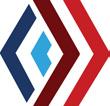
Global employment partner Omnipresent provides techenabled business solutions combined with personalized expertise to support hiring people globally.
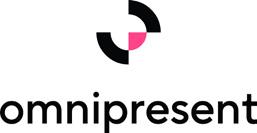
Aimed Alliance is a non-profit organization that seeks to protect and enhance the rights of health care consumers and providers.
Paycom (NYSE:PAYC) offers cloud-based human capital management software to help businesses streamline employment processes, from recruitment to retirement. With a robust suite of products including payroll, time and labor management.
Designing better ways to work by providing cutting-edge products and exceptional experiences within HR, Talent, Time Management, Benefits and Payroll.
LEARN MORE LEARN MORE LEARN MORE LEARN MORE
PARTNER WITH US
LEARN MORE
New Ideas and Tools for Effective Performance Management January 31, 2023
The State of Human Experience in the Workplace February 15-16, 2023
The Future of Upskilling and Employee Learning February 22, 2023
View our Upcoming Virtual Conference Schedule and Register Today!
Leadership Succession Made Simple: Do Right and Do It (much) Faster. January 31, 2023
February 7, 2023
HR’s Best-Kept Secret: Contingent Workers Are the Key to a Resilient Workforce
Engage, Connect, Inspire Your Teams: a Roadmap for Leaders February 8, 2023
Living Our Values Every Day - How Leading Companies Build Cultures of Employee Appreciation
Elevating the Employee Experience in 2023: Why Engagement, Wellbeing, and Culture Are Key
REGISTER
REGISTER
REGISTER
11:00 AM
12:00
ET REGISTER
-
PM
12:00 PM
1:00 PM ET REGISTER
-
11:00 AM
12:00
ET REGISTER VIRTUAl EVEnTS & HR.COm WEBCASTS UPCOmInG www.hr.com/upcoming_webcasts www.hr.com/virtualconferences
Today!
-
PM
View our Upcoming Webcasts Schedule and Register
WEBCASTS
2:00 PM - 3:00 PM ET REGISTER
February 15, 2023
1:00 PM - 2:00 PM ET REGISTER
VIRTUA l EVE n TS
February 14, 2023
WEBCASTS


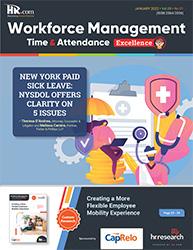
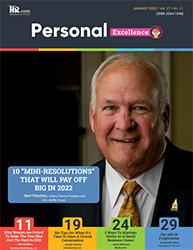
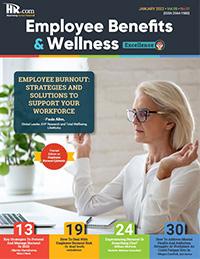
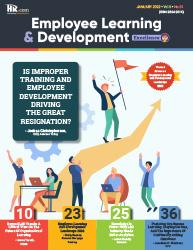

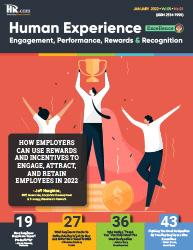
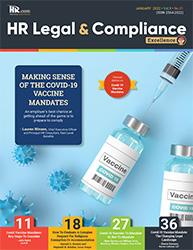
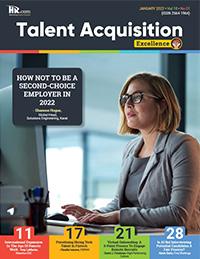
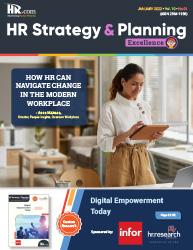
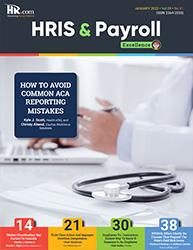
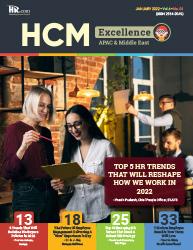
Like to submit an article? Use our online submission form or for more information go to www.hr.com/ExcellencePublications Publications 13 Targeted Publications to Reach Your Audience Informing, Educating, Enlightening and Assisting HR professionals in their personal and professional development, the Excellence series offers high-quality content through the publications!

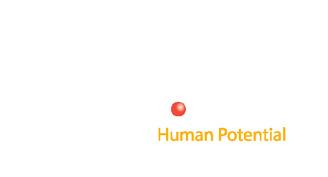
For more information: Phone: 1.877.472.6648 | Email: ePubeditors@hr.com | www.HR.com/epubs Employee Benefits & Wellness Excellence January 2023

















 Winkle
Winkle








 Rensis Likert Professor, Ross School of Business, University of Michigan Partner, The RBL Group
Rensis Likert Professor, Ross School of Business, University of Michigan Partner, The RBL Group
















































